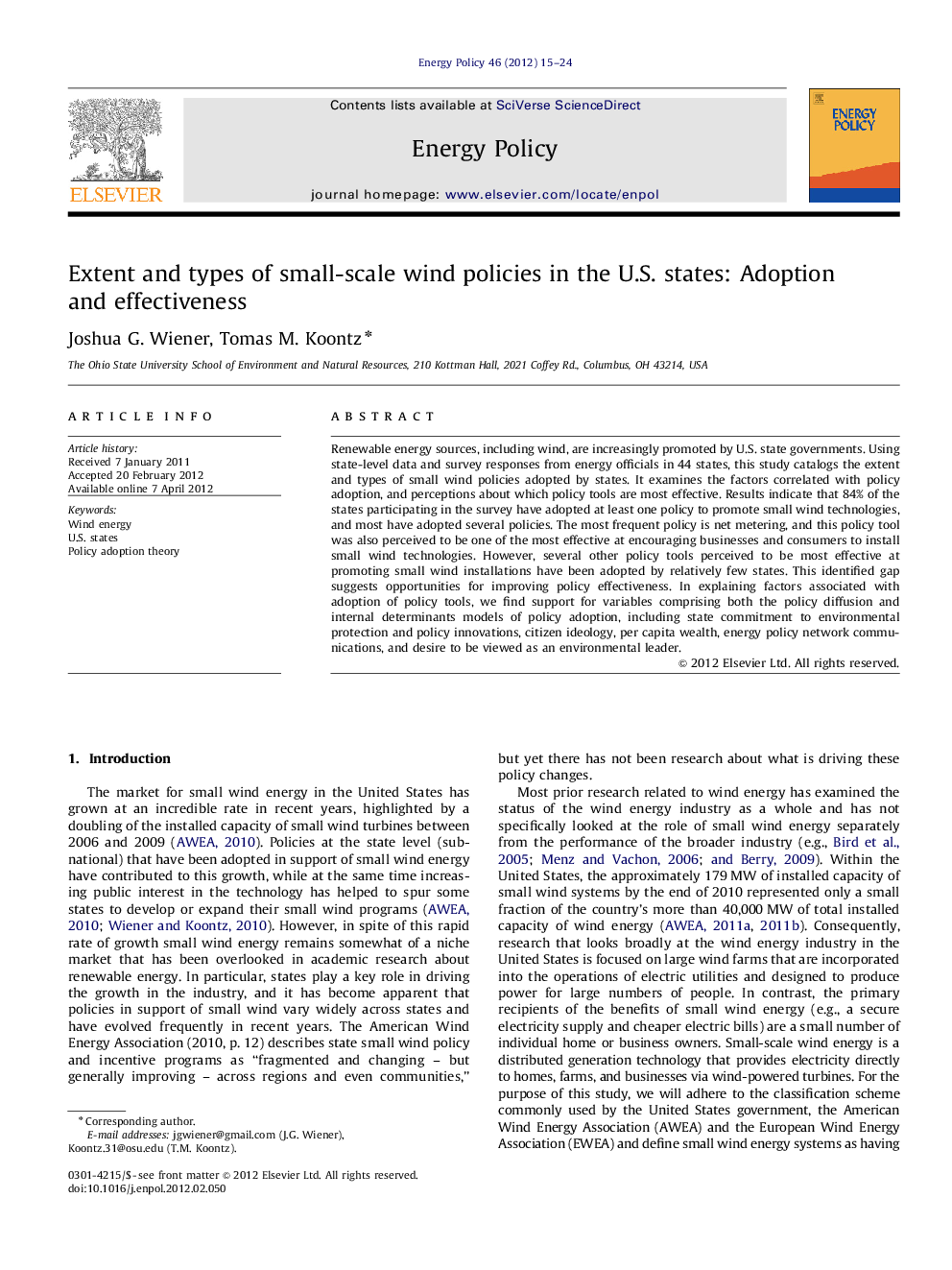| Article ID | Journal | Published Year | Pages | File Type |
|---|---|---|---|---|
| 7406356 | Energy Policy | 2012 | 10 Pages |
Abstract
Renewable energy sources, including wind, are increasingly promoted by U.S. state governments. Using state-level data and survey responses from energy officials in 44 states, this study catalogs the extent and types of small wind policies adopted by states. It examines the factors correlated with policy adoption, and perceptions about which policy tools are most effective. Results indicate that 84% of the states participating in the survey have adopted at least one policy to promote small wind technologies, and most have adopted several policies. The most frequent policy is net metering, and this policy tool was also perceived to be one of the most effective at encouraging businesses and consumers to install small wind technologies. However, several other policy tools perceived to be most effective at promoting small wind installations have been adopted by relatively few states. This identified gap suggests opportunities for improving policy effectiveness. In explaining factors associated with adoption of policy tools, we find support for variables comprising both the policy diffusion and internal determinants models of policy adoption, including state commitment to environmental protection and policy innovations, citizen ideology, per capita wealth, energy policy network communications, and desire to be viewed as an environmental leader.
Keywords
Related Topics
Physical Sciences and Engineering
Energy
Energy Engineering and Power Technology
Authors
Joshua G. Wiener, Tomas M. Koontz,
